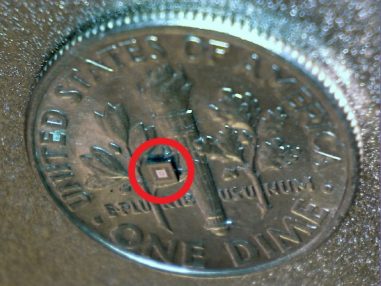CO2 Microsensors
November 12, 2020

In April 2020, the U.S. Department of Energy selected the Bureau of Economic Geology to lead a threeyear project to track carbon dioxide underground with microsensors.
The goal of the $3.7 million grant is to improve scientists’ understanding of how CO2 travels underground by providing the department with realtime data and monitoring of subsurface CO2 movement. For the project, co-principal investigators and bureau project managers David Chapman and Mohsen Ahmadian will develop and integrate wireless autonomous microsensor technology developed by the California Institute of Technology. The Research Triangle Institute and Sandia National Laboratories also developed project technology.
Microsensors will be deployed within a well casing annulus, the area between the wellbore and the casings. Researchers will use a wireless, solid-state sensor system to continuously measure CO2, pH, temperature and methane within the high-pressure, high-temperature environment. The sensors are arranged on millimeter-size “sensors on a chip,” that were developed by the bureau’s Advanced Energy Consortium during the past eight years. These sensors consist of autonomous microelectronic radiofrequency tag circuits with memory and antenna that have been microfabricated on the sensor chips.
The sensor chips are wirelessly operated and inductively powered with smart casing collars containing routers that communicate to the surface. The project’s goals include successfully conducting a fully integrated field laboratory validation of an integrated distributed wireless intelligent sensor system at the bureau’s Intermediate Scale Field Test Lab in Devine, Texas.
Back to the Newsletter